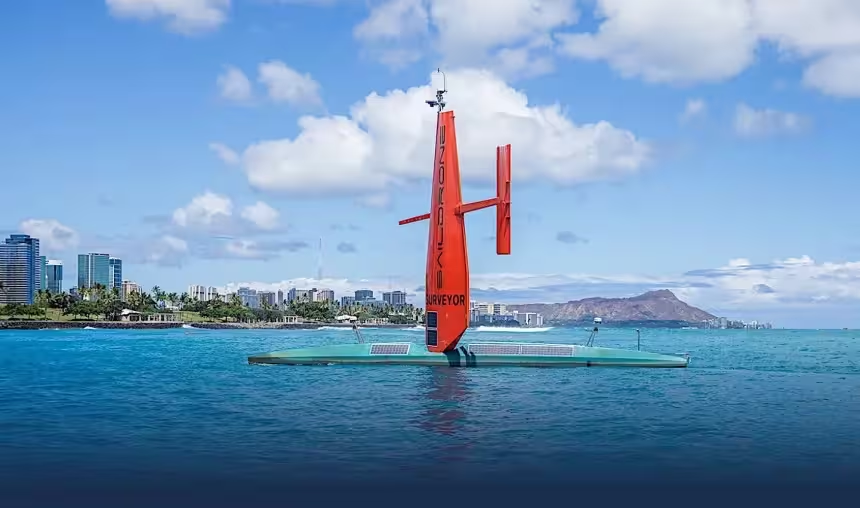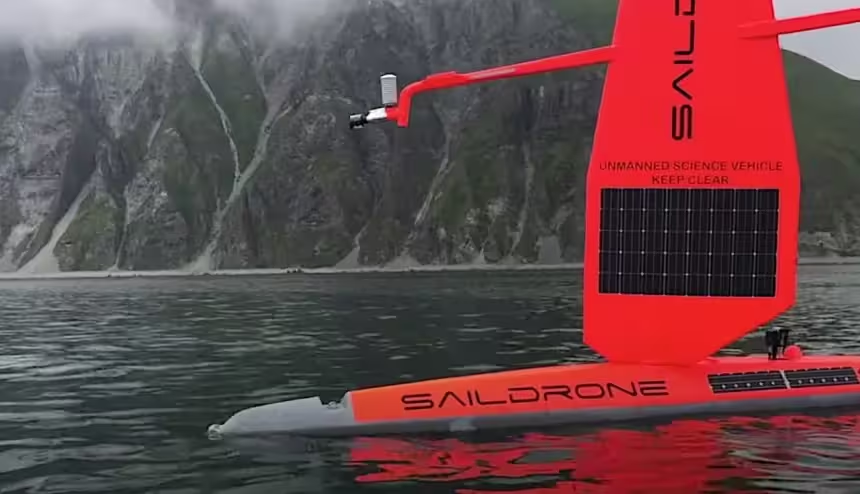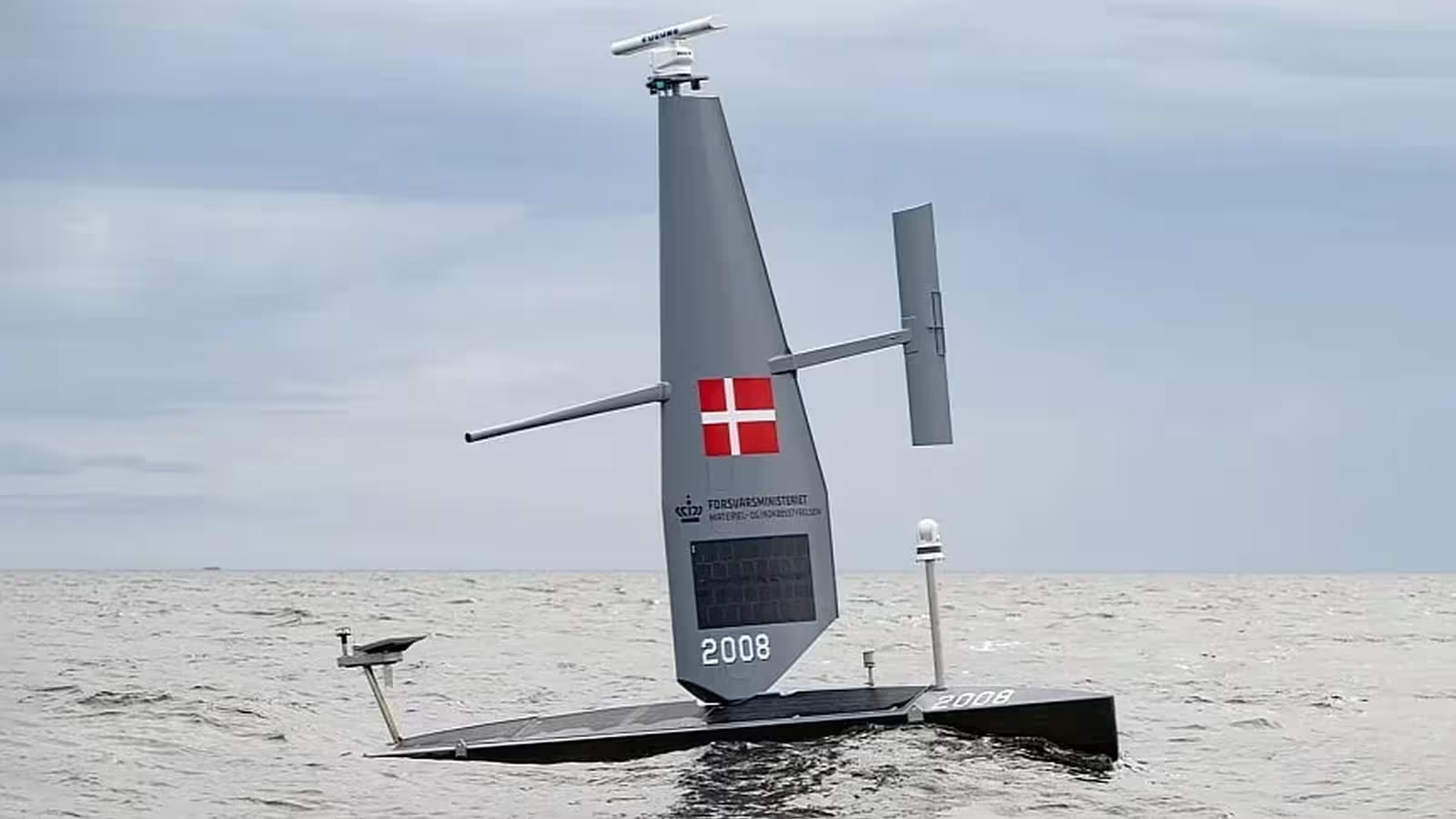5 Minutes
Exploring the Next Generation of Autonomous Naval Vehicles
The rapid rise of drone technology is redefining the landscape of modern warfare and maritime operations. While airborne drones have already become an integral part of military arsenals worldwide, autonomous sea vehicles are now making waves in naval defense. Among the innovators in this field is Saildrone, a California-based company transforming ocean data collection and national security with its advanced uncrewed surface vehicles (USVs).
Origins: From Civilian Science to Military Application
Saildrone didn’t start out as a defense contractor. Initially, its uncrewed surface vehicles were designed for civilian purposes, such as gathering oceanographic data over long durations for environmental research and monitoring. However, the robust capabilities of these USVs quickly caught the attention of military strategists seeking new ways to bolster naval operations.
Product Lineup: Surveyor, Voyager, and Explorer
The company currently offers three distinct USV platforms: the Saildrone Surveyor, Voyager, and Explorer. Recently, the Surveyor made headlines with a groundbreaking deep-water cable route survey in the North Atlantic, mapping over 2,796 miles (4,500 km) of seabed using advanced Kongsberg EM304 MKII multibeam sonar technology. This accomplishment underlines the engineering pedigree Saildrone brings to autonomous marine vehicles.
This article focuses on the Saildrone Voyager, the mid-sized player that recently participated in a historic NATO multi-domain exercise.

Saildrone Voyager in Action: NATO Demonstration and Real-World Impact
In June, four Saildrone Voyager droids were deployed in the Gulf of Finland and the western Baltic Sea during the NATO Task Force X demonstration. Their mission was to prove the effectiveness of unmanned vehicles in active military scenarios. The operation tested the USVs in challenging, real-world conditions—facing rough seas with wave heights exceeding 6.5 feet (2 meters) and persistent near-gale winds.
Despite the harsh environment, the Voyager fleet remained fully operational for the entire exercise, showcasing the endurance and reliability that modern naval operations demand from autonomous vehicles. Thanks to advanced, undisclosed detection technologies, these USVs continuously scanned their surroundings, tracking hundreds of targets daily. This included both simulated ‘enemy’ vessels and actual ships, such as components of the shadowy Russian fleet known for evading international sanctions.
Vehicle Specifications: Engineering Excellence at Sea
The Saildrone Voyager is engineered for versatility and long-lasting presence at sea. With a hull measuring 33 feet (10 meters) in length and a 6-foot (2-meter) draft, it strikes a balance between compactness and operational capacity. Its primary propulsion system is wind—a 19-foot (6-meter) rigid wing harnesses natural energy for sustainable movement. For added maneuverability and reliability, a 4-kW electric motor provides auxiliary power when needed.
Where Voyager truly excels is in autonomy and duration: it can operate unsupervised for up to 100 days. Its suite of sensors includes high-resolution cameras, advanced radar systems, passive acoustics, and environmental sensors, ensuring comprehensive situational awareness. Communication with operators on land is handled via Starlink or Iridium satellite links, guaranteeing connectivity even in remote maritime theaters.

Certification and Reliability
Setting a benchmark in maritime technology, the Saildrone Voyager became the first USV to achieve commercial classification. With the American Bureau of Shipping’s seal of approval, Voyager is authorized for operations both in open waters and within ports, underscoring its reliability for commercial and defense clients alike.
Mission Versatility: Beyond Military Operations
While much attention centers on naval and national defense roles, the Voyager's flexible platform also addresses a range of maritime challenges, including anti-smuggling patrols, illegal fishing detection, border security operations, and ecosystem monitoring. This adaptability puts the Saildrone Voyager in a unique position at the intersection of civilian research and military utility.
Comparisons Within the Saildrone Lineup
The Voyager stands as the midsize option in Saildrone’s USV family:
- Surveyor: The largest model, measuring 65 feet (20 meters), is powered by a combination of wind and a 75-horsepower diesel engine. It boasts extended missions of up to 180 days at sea, independent from any home port, and requires minimal human intervention for maintenance or refueling. Its deep-sea exploration capabilities reach to depths of 23,000 feet (7,000 meters), making it ideal for large-scale oceanographic and undersea cable installation projects.
- Explorer: The most compact model, at 23 feet (7 meters), is designed exclusively for wind power. This lightweight USV is marketed more towards civilian marine research than the military, and is optimized for long-duration monitoring, such as fisheries management and general ocean data collection.
Performance and Market Positioning in the Autonomous Vehicle Arena
With its robust construction, advanced technological integration, and proven durability in demanding maritime conditions, the Saildrone Voyager exemplifies how innovative vehicle engineering is pushing boundaries in the autonomous vehicle sector. Its participation in high-profile NATO exercises and its ability to track elusive vessels—such as elements of the Russian shadow fleet—underscore its operational potential and strategic value.
As auto manufacturers intensify their focus on autonomous vehicle technology for land and sea, Saildrone’s USVs represent a significant leap toward safer, smarter, and more efficient marine operations. They not only redefine maritime surveillance and border control, but also set the standard for integrating electric propulsion, renewable energy, and AI-enabled navigation in vehicle design.
Conclusion: Redefining the Future of Maritime Vehicles
The Saildrone Voyager is emblematic of the future of naval vehicles, bridging the gap between cutting-edge civilian research and advanced military operations. For readers and car enthusiasts following the evolution of autonomous driving, electric drive systems, and IoT-connected vehicles, the technology underpinning Saildrone’s USVs offers a glimpse into how vehicle engineering is spearheading the next era of mobility on both land and sea.
Source: autoevolution



Comments